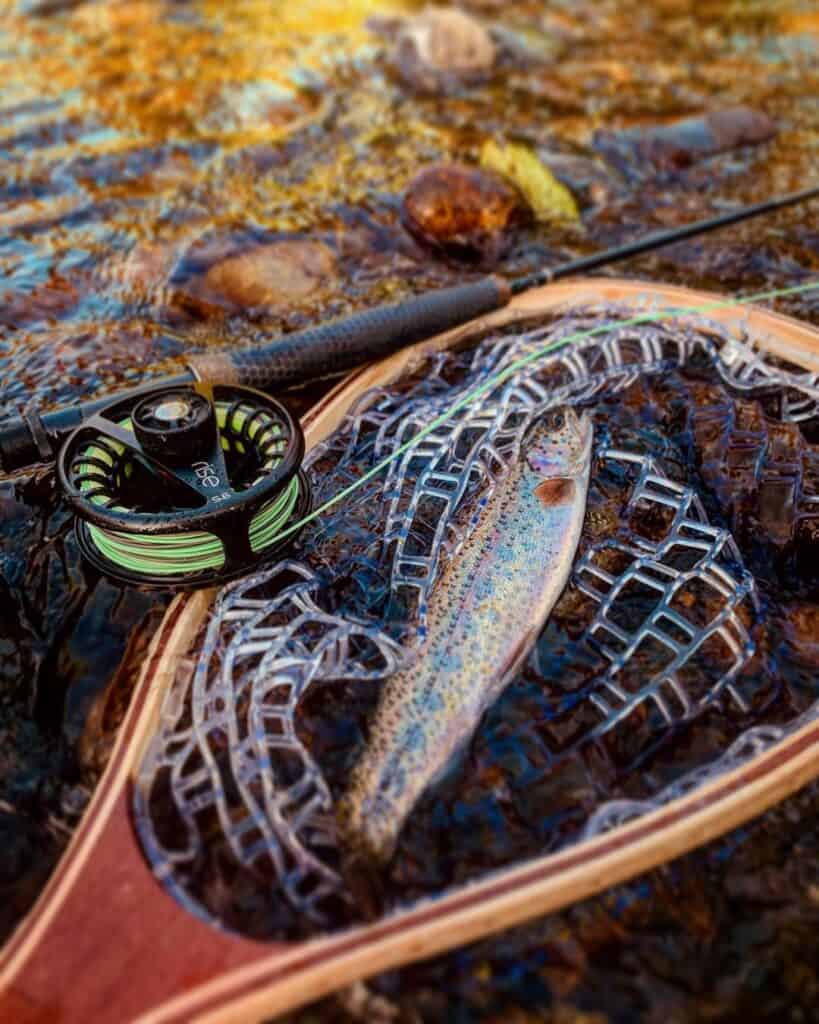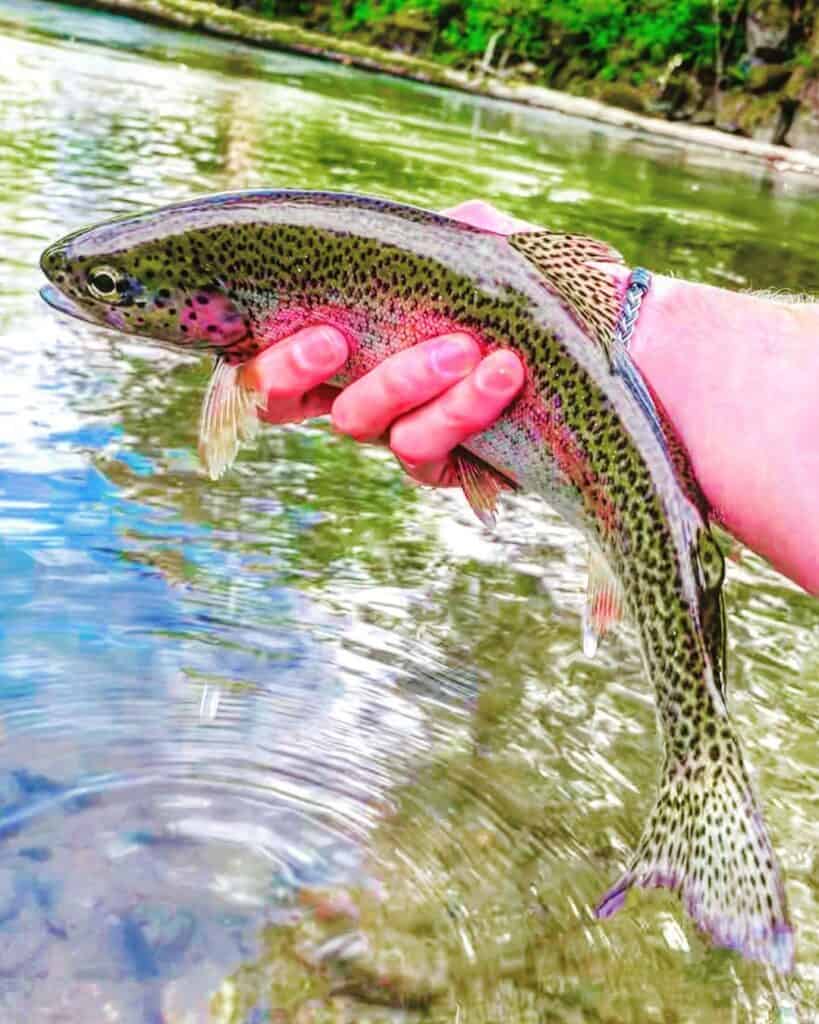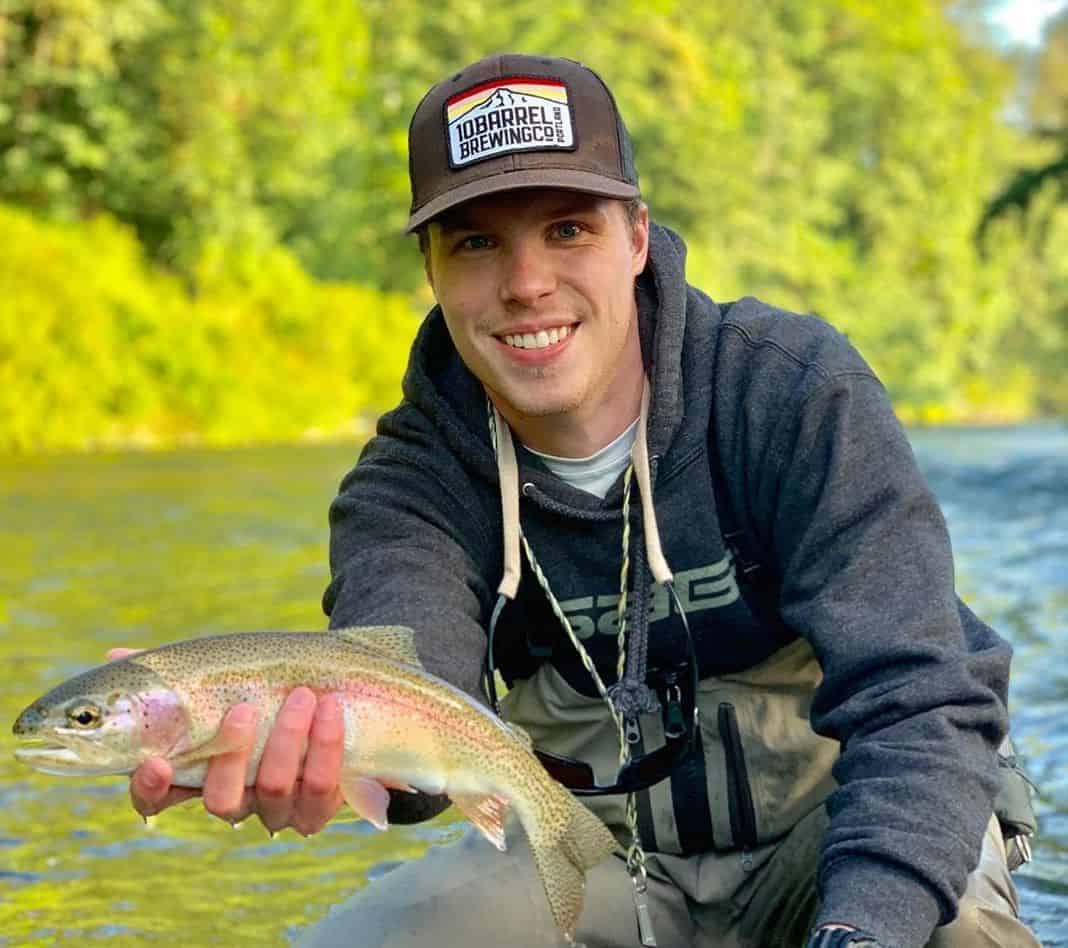A favorite with Seattle locals, the Cedar River is a great, close-to-town option that offers exceptional fishing for feisty wild trout.
Though the Cedar River is now a household name among anglers in the Seattle area, it wasn’t always that way.
In fact, the Cedar River went largely unnoticed until it was opened for trout fishing during the summer of 2004, according to the local experts at Emerald Water Anglers.
The river had been closed to fishing decades earlier because its salmon and steelhead runs had been devastated and still aren’t where they ought to be.
Cedar River remains an important spawning ground for these anadromous fish, including Lake Washington’s famous but also famously hot and cold sockeye salmon runs.
The river is still closed to any and all fishing for salmon and steelhead, and it’s also simply illegal to fish when most of these big species return and spawn.
But during the years of closure, the Cedar River’s trout thrived. So when it opened, it quickly caught on, and it’s been a go-to spot for Puget Sound-area anglers ever since.
The river holds trout which are unusually larger than what you’d find on other similar mountain streams, which is one of the things that makes it so special.
You must release all of these wild trout unharmed, which helps preserve this trophy-caliber fishery.
Read on to learn how to catch the large trout that call the Cedar River home!
Trout Fishing

You’ll find both rainbow trout and cutthroat trout in the Cedar River, though rainbow trout tend to be more common.
The cutthroat in the river aren’t the westslope cutthroat you might find in rivers further to the east; these natives are coastal cutthroat, which look much more similar to rainbows than their westslope cousins do.
Some of the trout in the river can grow bigger than 25 inches long, and it’s a common theory that this is because some fish migrate into massive Lake Washington to feed during the winter months.
The Cedar is a fast-flowing, crystal-clear river, and most of the fishing is walk-and-wade.
Fly fishing produces the most success here, particularly for those who like euro nymphing. A couple of tungsten beadhead nymphs is all you need to get the job done.
Frenchies, perdigons, hare’s ear and pheasant tail patterns are all top producers on the Cedar River.
If you’re euro nymphing, try to pick flies with a “hot spot” – a collar of bright thread or dubbing tied directly behind the bead.
In a river like the Cedar, this hot spot helps to get the attention of fish, particularly because the fish in the river aren’t too picky.
If you’re fishing dry flies, your typical mountain stream patterns work well. Caddis, stimulators and terrestrial patterns are all favorites.
Conventional anglers on the Cedar can do well using small spinners, typically swung downstream with the current.
Special regulations are in place on the river, restricting all fishing to artificial flies and lures. All hooks must have a single point and be barbless, which will mean switching hooks out on many commercially sold lures.
When to Fish

The river is generally open from late May to August 31, which is shorter than the trout season on most rivers in Washington.
Fortunately, summer is the best time to fish the river – flows are usually reasonable by July, and trout are happily eating flies all summer long.
The fishing can change throughout the summer, though. Terrestrial patterns typically don’t produce as well until August, when the water temperatures are warmer and the dog days of the summer are really setting in.
If you’re fishing during a high water year or in the early summer, try fishing a couple of size 14 tungsten beadhead nymphs – they’ll get down faster than anything else, and will catch you a lot of fish.
Location and Access
The Cedar River is a walk-and-wade fishery – with an emphasis on the walk portion of that phrase. Most anglers access the river via the Cedar River Trail, which parallels the river for a large portion of the open stream.
The river is open from the mouth at Lake Washington to the Landsburg Road Bridge a little more than 20 miles upstream.
If you’re fishing the lower river, near Renton, expect to share the river with plenty of non-anglers, as it’s a popular spot for sunbathing, hiking and swimming.
The lower river typically produces larger trout, though, while the upper river – closer to Landsburg Natural Area east of Maple Valley – is smaller, less popular, and tends to have smaller fish. If you’re looking for more solitude, fish the upper reaches.
This fishery is within an hour’s drive of millions of people in the Seattle-Tacoma area, so don’t expect to have the river to yourself.
Even though the river went largely unnoticed until it reopened to trout fishing in 2004, according to Emerald Water Anglers, today it has built a reputation as one of the best fly fishing spots in the Seattle area.
If you know what to expect and put a little effort into it, though, it can be a great escape for a couple of hours after work, and you never know – you just might hook into one of those 25-inch rainbows.
Find more fishing spots in King County
Washington Resources
WDFW Fishing and Stocking Reports
WDFW Fishing Regulations
National Weather Service forecasts
Carter Reschke is a freelance writer based in Oregon. Passionate about the outdoors, Carter is a fly fishing aficionado and spends his days on the river when he’s not writing.

